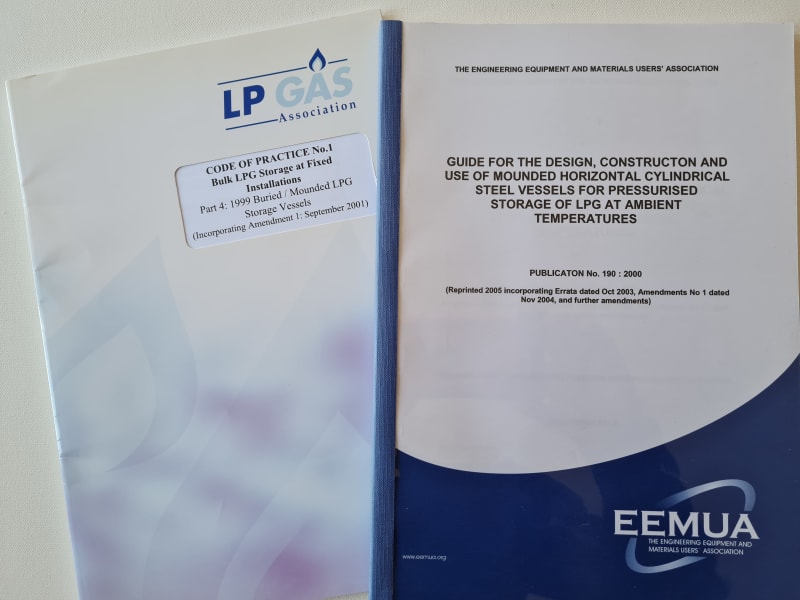This is in the intersection of pressure vessels and tanks, but I suspect this is a better place to discuss.
I've got a client asking if they can bury large scale 50,000+ gal LPG Tanks as a fire/explosion mitigation measure and to justify smaller setbacks. I don't like buried tanks generally, and these are not small, but I'm still trying to do my due diligence on the literature. I can't personally find anything of this scale in the major API, NFPA or related LPG system design standards. There are small scale buried tanks referenced in codes, but nothing of this size. However, I'm seeing some (rare) references on the web to projects fabricating things like 60k gallon buried propane tanks, so somebody seems to be doing it. It's also definitely done in some types of LNG installations. That seems to be more for the purposes of helping with refrigeration, though, and there's a fair amount of complexity to those sorts of designs.
There are obviously maintenance and inspection issues relating to burying, and cost implications, but I'm trying to figure out if there are other implications that I should be considering, so I'm trying to track down any literature I can. Anyone seen anything?
I've got a client asking if they can bury large scale 50,000+ gal LPG Tanks as a fire/explosion mitigation measure and to justify smaller setbacks. I don't like buried tanks generally, and these are not small, but I'm still trying to do my due diligence on the literature. I can't personally find anything of this scale in the major API, NFPA or related LPG system design standards. There are small scale buried tanks referenced in codes, but nothing of this size. However, I'm seeing some (rare) references on the web to projects fabricating things like 60k gallon buried propane tanks, so somebody seems to be doing it. It's also definitely done in some types of LNG installations. That seems to be more for the purposes of helping with refrigeration, though, and there's a fair amount of complexity to those sorts of designs.
There are obviously maintenance and inspection issues relating to burying, and cost implications, but I'm trying to figure out if there are other implications that I should be considering, so I'm trying to track down any literature I can. Anyone seen anything?

